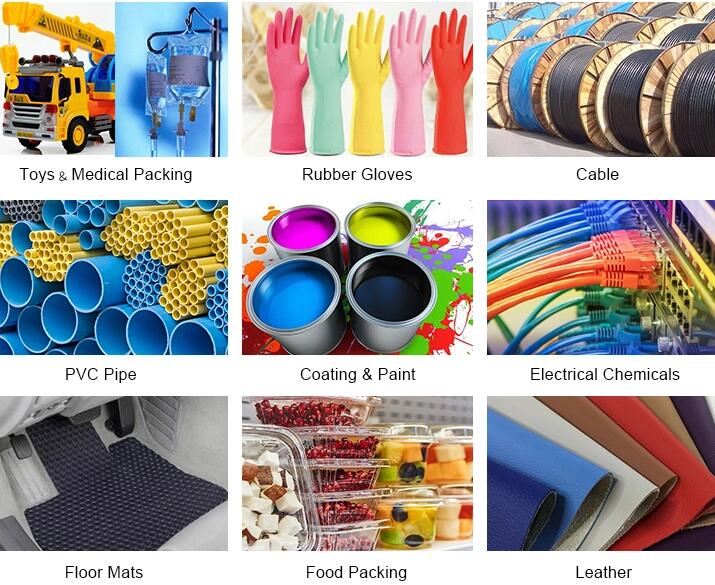What is the scope of the application of plasticizers?
Plasticizers are versatile additives widely used in various industries to enhance the flexibility, workability, and durability of materials, particularly plastics. Their primary function is to decrease the viscosity and glass transition temperature of polymers, making the materials more pliable and easier to process. Here is an overview of the scope of their application across different sectors:
1. Plastics and Polymers:
– PVC Products: The most common application of plasticizers is in polyvinyl chloride (PVC) products. They are essential in making flexible PVC for products like cables, hoses, flooring, wall coverings, and inflatable products.
– Films and Sheets: Used in manufacturing flexible films and sheets for packaging, agricultural coverings, and various other applications.
– Elastomers and Rubbers: Improve the flexibility and elasticity of synthetic rubbers used in automotive parts, footwear, and seals.
2. Construction:
– Concrete Admixtures: Plasticizers are used to improve the workability and flow properties of concrete. Superplasticizers, a subtype, significantly increase the fluidity of concrete mixes, allowing for easier placement and improved strength.
– Sealants and Coatings: Enhance the flexibility and durability of construction sealants and coatings, which helps in accommodating movement and preventing cracks.
3. Automotive:
– Interior Components: Used in the production of flexible parts such as dashboards, door panels, and upholstery. They provide durability and resistance to wear and tear.
– Under-the-Hood Components: Improve the flexibility and performance of hoses, belts, and other engine components.
4. Medical:
– Medical Devices: Critical in producing flexible tubing, blood bags, and other medical devices that require sterilization and durability.
– Pharmaceuticals: In certain drug formulations, plasticizers are used to improve the flexibility and handling of dosage forms like tablets and capsules.
5. Textiles and Leather:
– Coated Fabrics: Applied in the production of coated fabrics used for protective clothing, tarpaulins, and upholstery.
– Synthetic Leather: Enhance the softness and flexibility of synthetic leather products used in fashion, furniture, and automotive interiors.
6. Consumer Goods:
– Toys: Essential in making safe and flexible toys, especially those made from PVC.
– Household Items: Used in products like shower curtains, inflatable furniture, and garden hoses.
7. Adhesives and Sealants:
– Adhesives: Improve the flexibility and bond strength of adhesives used in various applications, including construction and packaging.
– Sealants: Enhance the performance of sealants in construction, automotive, and other industries.
8. Packaging:
– Flexible Packaging: Used in films and wraps for food and non-food products to provide flexibility, durability, and ease of use.
– Shrink Wraps and Stretch Films: Applied in the production of shrink wraps and stretch films for bundling and protecting goods during transport.

The broad range of applications demonstrates the critical role plasticizers play in modern manufacturing and product development. They enable the creation of products with desired mechanical properties and processing characteristics, significantly impacting various industries and everyday life.
-
TBC Tributyl Citrate Plasticizer Market Size and Scope
-
What types of plasticizers are there and what properties should they have to meet the requirements?
-
Choose the right plasticizer to make plastic tougher!
-
The importance of plasticizers in industrial production
-
What are the functions of plasticizers in glue?
-
What are the characteristics of ESBO?